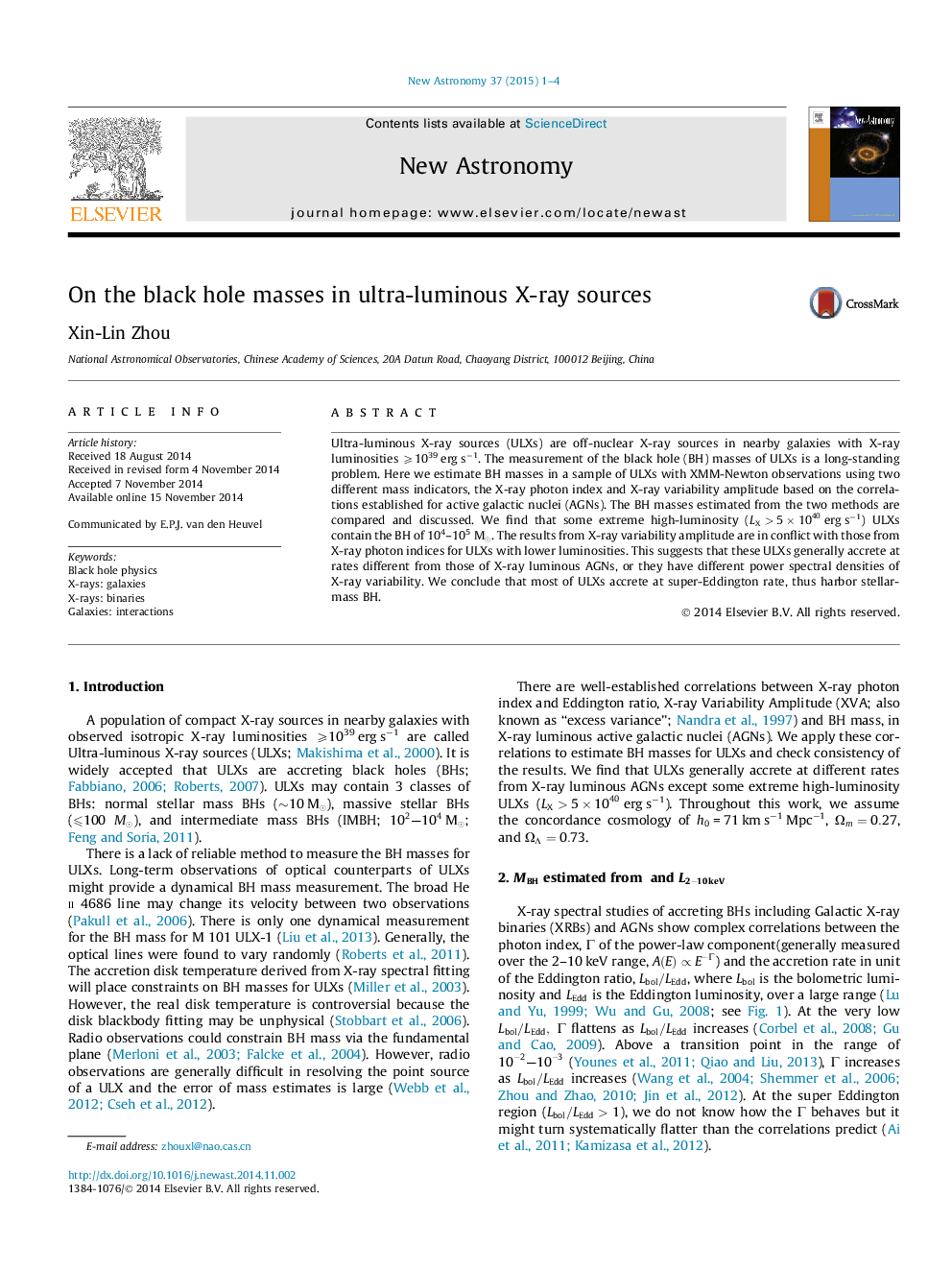| Article ID | Journal | Published Year | Pages | File Type |
|---|---|---|---|---|
| 1778934 | New Astronomy | 2015 | 4 Pages |
Ultra-luminous X-ray sources (ULXs) are off-nuclear X-ray sources in nearby galaxies with X-ray luminosities ⩾⩾1039 erg s−1. The measurement of the black hole (BH) masses of ULXs is a long-standing problem. Here we estimate BH masses in a sample of ULXs with XMM-Newton observations using two different mass indicators, the X-ray photon index and X-ray variability amplitude based on the correlations established for active galactic nuclei (AGNs). The BH masses estimated from the two methods are compared and discussed. We find that some extreme high-luminosity (LX>5×1040LX>5×1040 erg s−1) ULXs contain the BH of 104–105 M⊙M⊙. The results from X-ray variability amplitude are in conflict with those from X-ray photon indices for ULXs with lower luminosities. This suggests that these ULXs generally accrete at rates different from those of X-ray luminous AGNs, or they have different power spectral densities of X-ray variability. We conclude that most of ULXs accrete at super-Eddington rate, thus harbor stellar-mass BH.
